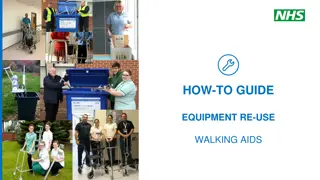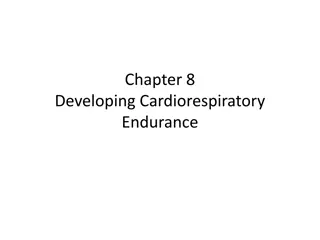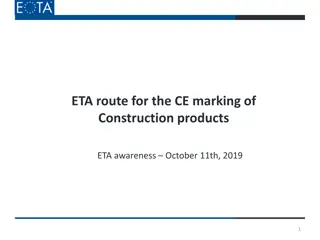Training Requirements for Walking & Working Surfaces in Construction Industry
Identifying key points within the 29 CFR 1926 Standards related to walking/working surfaces, addressing common issues, providing mitigation strategies, and informing employees about employer obligations. The training agenda covers requirements for ladders, stairways, fall protection systems, and retraining highlights the importance of updating skills and maintaining knowledge for long-term productivity and mistake reduction.
Download Presentation

Please find below an Image/Link to download the presentation.
The content on the website is provided AS IS for your information and personal use only. It may not be sold, licensed, or shared on other websites without obtaining consent from the author. Download presentation by click this link. If you encounter any issues during the download, it is possible that the publisher has removed the file from their server.
E N D
Presentation Transcript
Walking Working Surfaces Bassam Albukhaytan, Dominic Guevara, Benjamin Klebs, Maggie Krawczyk, Jonte Lane
Objectives To identify key points within the 29 CFR 1926 Standards involving walking/working surfaces To address common issues within each standard along with mitigation strategies To inform employees on employer obligations within the standards
Agenda of Training 1926.1060 - Training Requirements 1926.1051 - General 1926.1052 - Stairways 1926.1053 - Ladders 1926 - Appendix A
1926.1060 - Training Requirements Employer shall provide a training program for employees using ladders and stairways Program should enable employees to recognize hazards with stairways/ladders Train employees on procedures to be followed to minimize hazards
1926.1060 - Training Requirements 1926.1060(a)(1) Nature of fall hazards in the work area Procedures for building, maintaining, and disassembling the fall protection system used Proper construction, use, placement, and care in handling stairways/ladders
1926.1060 - Training Requirements 1926.1060(a)(1)- Continued Maximum intended load-carrying capacities of ladders Standards contained in this subpart
1926.1060 - Training Requirements 1926.1060(b) Retraining shall be provided for each employee as necessary so that the employee maintains the understanding and knowledge acquired through compliance with this section
1926.1060 - Training Requirements Why retrain? Helps update skills Increase long term productivity Helps reduce mistakes
1926.1051- General Requirements This standard requires: A ladder to be provided if there is a change in elevation more than 48 inches The passage for movement to be kept clear at all times Employers to provide and install stairway and ladder fall protection systems within compliance
1926.1051- General Requirements Common issues Fall protection systems are not deployed by every employee Stairways missing handrails Personal Fall Arrest Systems are not used properly by employee
1926.1051- General Requirements Mitigation Strategies Provide Personal Fall Arrest Systems to employees working at height Proper training Provide guardrails and handrails to any platform or staircase
1926.1052 - Stairways This standard requires Stairs must be installed at 30 - 50 Uniform riser height and tread depth, free of projection hazards Extended platform where door/gate swings into, effective width at least 20
1926.1052 - Stairways Requirements Cont. Over 4 steps or 30 vertical rise, at least 1 handrail Stair rails along sides, at least 36 above tread, no greater than 37 if used as handrail
1926.1052 - Stairways Requirements Cont. Mid rail, screen/mesh, or vertical member required Mid rails must be midway, screen/mesh must entirely cover opening, vertical members 19 apart
1926.1052 - Stairways Requirements Cont. Handrails/stair rails must withstand 200 lb force Handrail height range 30 - 37 Stair rails/handrails must be surfaced and installed to allow thorough grasping, be hazard free, Unprotected sides of landings must be guarded
1926.1052 - Stairways Common Issues Effective width of platforms not reaching 20 when door/gate open Mid rails not midway Hand railing not providing adequate handhold
1926.1052 - Stairways Mitigation Strategies Competent installation crew, inspected by safety professional Test rails prior to purchase, have safety professional inspect selection
1926.1053 - Ladders This standard requires: Each portable ladder should hold at least four times the maximum intended load.(a)(1)(i) Ladder rungs, cleats, and steps shall be parallel, level, and uniformly spaced when the ladder is in position for use.(a)(2)
1926.1053 - Ladders Common Issues: Worn out rungs Using ladders on uneven surfaces Climbing ladders with loads in hands Absence of ladder safety devices
1926.1053 - Ladders Mitigation Strategies: Cover rungs with slip-resistant material Use ladders only on flat service Climb ladders with at least one hand Do not carry load while climbing Install cages for ladders about 24 ft.
1926.1053 - Ladders Figure 2: Portable Ladder Safety for State of California Department of Industrial Relations (2019)
1926 - Ladders - Subpart X App A Appendix A brings more stringent standards with ladder loading and strength requirements of 1926.1053(a)(1). Manufactured portable wood ladders: ANSI A14.1-1982 Manufactured portable metal ladders: ANSI A14.2-1982 Manufactured fixed ladders: ANSI A14.3-1984 Job-made ladders: ANSI A14.4-1979 Plastic ladders: ANSI A14.5-1982
References OSHA. (1990). Training Requirements (Standard No. 1926.1060). Retrieved from https://www.osha.gov/laws- regs/regulations/standardnumber/1926/1926.1060 OSHA. (1990) General Requirements (Standard No.1926.1051). Retrieved from https://www.osha.gov/laws- regs/regulations/standardnumber/1926/1926.1051 OSHA. (1991). Stairways and Ladders (Standard No. 1926.1052). Retrieved from https://www.osha.gov/laws- regs/regulations/standardnumber/1926/1926.1052 OSHA. (2014). Ladders (Standard No. 1926.1053). Retrieved from https://www.osha.gov/laws- regs/regulations/standardnumber/1926/1926.1053 OSHA. (1990). Ladders (Standard No. 1926 Subpart X App A) Retrieved from https://www.osha.gov/laws- regs/regulations/standardnumber/1926/1926SubpartXAppA
References Cont. Figure 1 - OSHA. (2016). Stairway angle limit. Occupational Safety and Health Administration. [Graphic]. Reprinted from https://www.osha.gov/laws-regs/regulations/standardnumber/1910/1910.25 Figure 2 - State of California Department of Industrial Relations. (2019). Portable Ladder Safety. State of California Department of Industrial Relations. [Graphic] Redistributed from https://www.dir.ca.gov/dosh/etools/08-001/regs.htm

















































